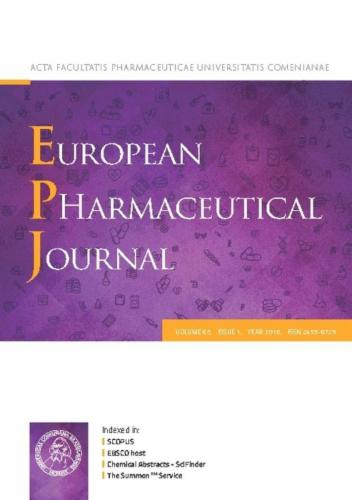Biodegradable nanofibrous pharmaceutical-eluting stents for finger joint reconstruction
IF 4.7
3区 医学
Q1 PHARMACOLOGY & PHARMACY
引用次数: 0
Abstract
Reconstructing small joints is a complex and challenging process that can result in graft-associated complications, primarily owing to the unsatisfactory function of currently used silastic material and the induction of adverse host reactions. This work addresses this issue by developing a solution-extrusion additively manufactured polycaprolactone (PCL) tubular mesh stents integrated with electrospun nanofibers containing prednisone- and ketorolac-loaded poly(lactic-co-glycolic acid) (PLGA). The mechanical performance of PCL stents and the drug release profiles of pharmaceuticals from spun nanofibers were evaluated. The results indicate that the manufactured PCL stents exhibit excellent mechanical strength and fatigue resistance. Furthermore, the drug-releasing nanofibers effectively eluted prednisone and ketorolac for over 30 days in vitro. In vivo tests on a rabbit knee model demonstrated sustained pharmaceutical release for >42 days. Animals that received the degradable drug-loaded stent exhibited the highest activity levels. These findings indicate that hybrid bioresorbable drug-eluting stents with extended prednisone and ketorolac release have potential applications in small joint arthroplasty.

用于手指关节重建的可生物降解纳米纤维药物洗脱支架。
重建小关节是一个复杂而具有挑战性的过程,可能导致移植物相关的并发症,主要是由于目前使用的弹性材料的功能不理想和诱导不良宿主反应。本研究通过开发一种溶液挤出添加剂制造的聚己内酯(PCL)管状网状支架,该支架与含有强的松和酮酸负载的聚乳酸-羟基乙酸(PLGA)的电纺丝纳米纤维相结合,解决了这一问题。研究了PCL支架的力学性能,以及纺丝纳米纤维对药物的释放特性。结果表明,制备的PCL支架具有良好的机械强度和抗疲劳性能。此外,释放药物的纳米纤维在体外有效地洗脱强的松和酮咯酸超过30天。在兔膝关节模型上的体内试验表明,药物持续释放超过42天。接受可降解载药支架的动物表现出最高的活性水平。这些结果表明,具有延长强的松和酮咯酸释放的混合生物可吸收药物洗脱支架在小关节置换术中具有潜在的应用前景。
本文章由计算机程序翻译,如有差异,请以英文原文为准。
求助全文
约1分钟内获得全文
求助全文
来源期刊
CiteScore
9.60
自引率
2.20%
发文量
248
审稿时长
50 days
期刊介绍:
The journal publishes research articles, review articles and scientific commentaries on all aspects of the pharmaceutical sciences with emphasis on conceptual novelty and scientific quality. The Editors welcome articles in this multidisciplinary field, with a focus on topics relevant for drug discovery and development.
More specifically, the Journal publishes reports on medicinal chemistry, pharmacology, drug absorption and metabolism, pharmacokinetics and pharmacodynamics, pharmaceutical and biomedical analysis, drug delivery (including gene delivery), drug targeting, pharmaceutical technology, pharmaceutical biotechnology and clinical drug evaluation. The journal will typically not give priority to manuscripts focusing primarily on organic synthesis, natural products, adaptation of analytical approaches, or discussions pertaining to drug policy making.
Scientific commentaries and review articles are generally by invitation only or by consent of the Editors. Proceedings of scientific meetings may be published as special issues or supplements to the Journal.

 求助内容:
求助内容: 应助结果提醒方式:
应助结果提醒方式:


